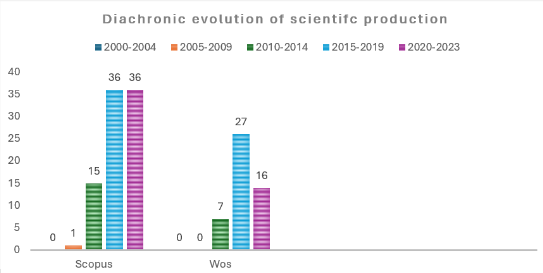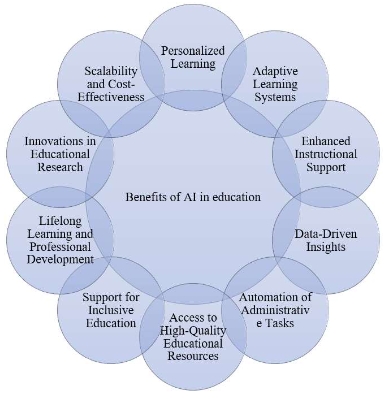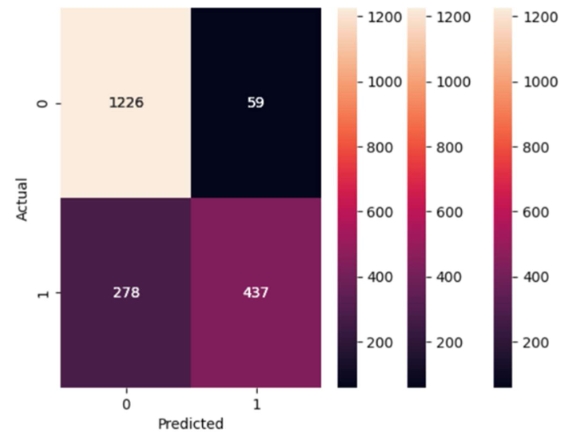On the interplay of cognitive, tactile, and computational approaches to number theory in teacher education
Abstract
This paper focuses on topics from elementary number theory used by the author in the mathematical preparation of K-12 teacher candidates by juxtaposing concrete materials, digital technology, and formal reasoning. The topics include triangular numbers, their connection to trapezoidal numbers, and their extension to other figurate numbers. The paper shows how problem solving may be based on the integration of modern-day approaches to mathematics supported by the creation of images, their numeric interpretation, followed by algebraic generalization, and computational verification of general statements in symbolic form. Digital tools used in the paper include spreadsheets, Wolfram Alpha, and Maple. Solicited comments by teacher candidates about their use of digital tools are shared.
References
[1]Matiyasevich YV. Formulas for prime numbers. In: Tabachnikov S (editor). Kvant Selecta: Algebra and Analysis, II. The American Mathematical Society; 1999. pp. 13–24.
[2]Booker AR, Sutherland AV. On a question of Mordell. Proceedings of the National Academy of Sciences 2021; 118(11): e2022377118. doi: 10.1073/pnas.2022377118
[3]Lagarias JC. The 3x + 1 problem: An overview. In: Lagarias JC (editor). The Ultimate Challenge: The 3x + 1 Problem. American Mathematical Society; 2010. pp. 3–30
[4]Hardy GH. An introduction to the theory of numbers. Bulletin of the American Mathematical Society 1929; 35(6): 778–818. doi: 10.1090/s0002-9904-1929-04793-1
[5]Vavilov NA. Computers as novel mathematical reality. II (Russian). In: Waring problem. Computer Tools in Education 2020; 3: 5–55. doi: 10.32603/2071-2340-2020-3-5–55
[6]Smith DE. History of Mathematics, Volume II (Special Topics of Elementary Mathematics). Dover; 1953.
[7]Abramovich S, Fujii T, Wilson J. Multiple-application medium for the study of polygonal numbers. Journal of Computers in Mathematics and Science Teaching 1995; 14(4): 521–557.
[8]Abramovich S. Revisiting mathematical problem solving and posing in the digital era: Toward pedagogically sound uses of modern technology. International Journal of Mathematical Education in Science and Technology 2014; 45(7): 1034–1052. doi: 10.1080/0020739x.2014.902134
[9]Wing JM. Computational thinking. Communications of the ACM 2006; 49(3): 33–35. doi: 10.1145/1118178.1118215
[10]Rivera FD. Toward a Visually-Oriented School Mathematics Curriculum. Springer; 2011.
[11]Vygotsky LS. The instrumental method in psychology (talk given in 1930 at the Krupskaya Academy of Communist Education). Available online: https://www.marxists.org/archive/vygotsky/works/1930/instrumental.htm (accessed on 7 August 2023).
[12]Common Core State Standards. Common core standards initiative: Preparing America’s students for college and career. Available online: https://learning.ccsso.org/wp-content/uploads/2022/11/Math_Standards1.pdf (accessed on 7 August 2023).
[13]National Council of Teachers of Mathematics. Principles to Actions: Ensuring Mathematical Success for All. National Council of Teachers of Mathematics; 2014.
[14]Char BW, Geddes KO, Gonnet GH, et al. Maple V Language Reference Manual. Springer; 1991.
[15]National Council of Teachers of Mathematics. Principles and Standards for School Mathematics. National Council of Teachers of Mathematics; 2000.
[16]Conference Board of the Mathematical Sciences. The Mathematical Education of Teachers II. The Mathematical Association of America; 2012.
[17]Association of Mathematics Teacher Educators. Standards for preparing teachers of mathematics. Available online: https://amte.net/standards (accessed on 7 August 2023).
[18]Simmt E, Davis B, Gordon L, Towers J. Teachers’ mathematics: Curious obligations. In: Proceedings of the 2003 Joint Meeting of the International Group for the Psychology of Mathematics Education; 13–18 July 2003; Honolulu, USA. pp. 175–182.
[19]Hershkowitz R, Arcavi A, Bruckheimer M. Reflections on the status and nature of visual reasoning—The case of the matches. International Journal of Mathematical Education in Science and Technology 2001; 32(2): 255–265. doi: 10.1080/00207390010010917
[20]Pedemonte B, Buchbinder O. Examining the role of examples in proving processes through a cognitive lens: The case of triangular numbers. ZDM Mathematics Education 2011; 43(2): 257–267. doi: 10.1007/s11858-011-0311-z
[21]Berana PJ, Montalbo J, Magpantay D. On triangular and trapezoidal numbers. Asia Pacific Journal of Multidisciplinary Research 2015; 3(4): 76–81.
[22]Asiru MA. A generalization of the formula for the triangular number of the sum and product of natural numbers. International Journal of Mathematical Education in Science and Technology 2008; 39(7): 979–985. doi: 10.1080/00207390802136503
[23]Bütüner SÖ. The use of concrete learning objects taken from the history of mathematics in mathematics education. International Journal of Mathematical Education in Science and Technology 2016; 47(8): 1156–1178. doi: 10.1080/0020739x.2016.1184336
[24]Nührenbörger M, Rösken-Winter B, Fung CI, et al. Design Science and its Importance in the German Mathematics Educational Discussion. Springer Nature; 2016.
[25]Wittmann EC. Developing mathematics education in a systemic process. Educational Studies in Mathematics 2001; 48(1): 1–20. doi: 10.1023/a: 1015538317850
[26]Plaza A. Proof without words: sum of triangular numbers. Mathematics Magazine 2016; 89(1): 36–37. doi: 10.4169/math.mag.89.1.36
[27]McMartin K, McMaster H. 2016. Opening the door on triangular numbers. Australian Primary Mathematics Classroom 2016; 21(4): 27–34.
[28]Demircioglu H. Preservice mathematics teachers’ proving skills in an incorrect statement: Sums of triangular numbers. Pedem Journal of Education and Instruction 2023; 13(1): 326–333. doi: 10.47750/pegegog.13.01.36
[29]Dickson LE. History of the Theory of Numbers, Volume II: Diophantine Analysis. Dover; 2005.
[30]Roegel D. A reconstruction of Joncourt’s table of triangular numbers (1762) (English). Technical Report. Nancy, France: Lorraine Laboratory of IT Research and its Applications. (A reconstruction of: Élie de Joncourt. De natura et præclaro usu simplicissimæ speciei numerorum trigonalium. The Hague: Husson, 1762); Available online: https://locomat.loria.fr/joncourt1762/joncourt1762doc.pdf (accessed on 8 December 2023).
[31]Pólya G. Mathematical Discovery: On Understanding, Learning, and Teaching Problem Solving (Volume 2). John Willey & Sons; 1965.
[32]Langtangen HP, Tveito A. How should we prepare the students of science and technology for a life in the computer age? In: Engquist B, Schmid W (editors). Mathematics Unlimited—2001 and Beyond. Springer; 2001. pp. 809–825.
[33]Abramovich S. Using technology with future teachers of primary school mathematics: A glimpse into an American experience. Computer Tools in Education 2021; 3: 85–96. doi: 10.32603/2071-2340-2021-3-85-95
[34]Abramovich S. Integrating Computers and Problem Posing in Mathematics Teacher Education. World Scientific; 2019.
[35]Arnheim R. Visual Thinking. University of California Press; 1969.
[36]Conole G, Dyke M. What are the affordances of information and communication technologies? Research in Learning Technology 2004; 12(2). doi: 10.3402/rlt.v12i2.11246
[37]Vygotsky LS. Mind in Society. Harvard University Press; 1978.
[38]Tzanakis C, Arcavi A, de Sá CC, et al. Integrating history of mathematics in the classroom: An analytic survey. In: Fauvel J, van Maanen J (editors). History in Mathematics Education. Springer; 2002. pp. 201–240.
Copyright (c) 2023 Sergei Abramovich

This work is licensed under a Creative Commons Attribution 4.0 International License.









